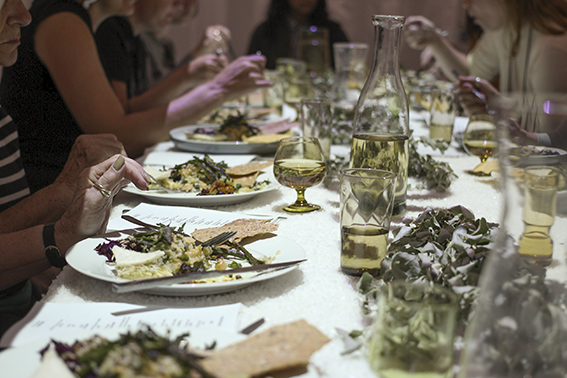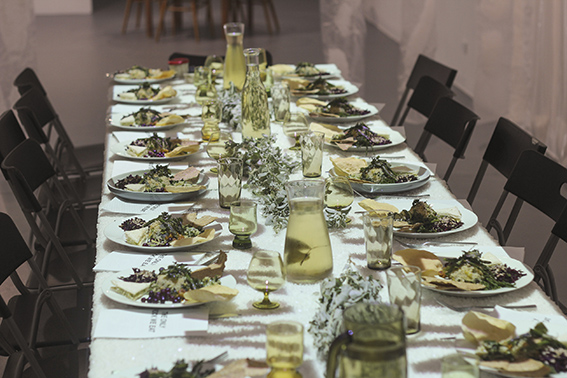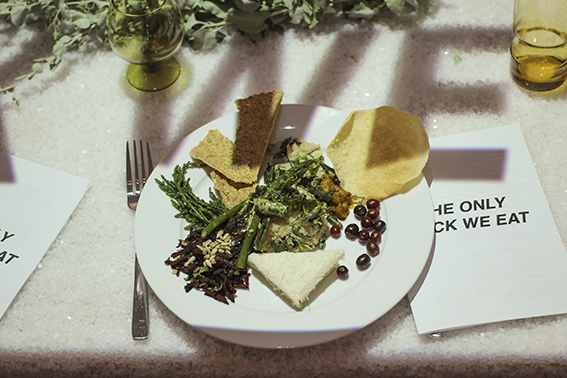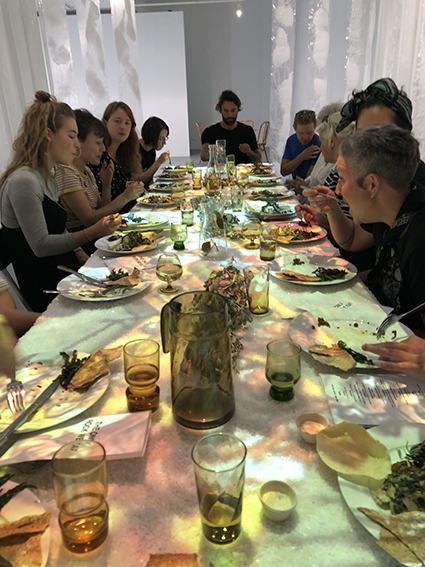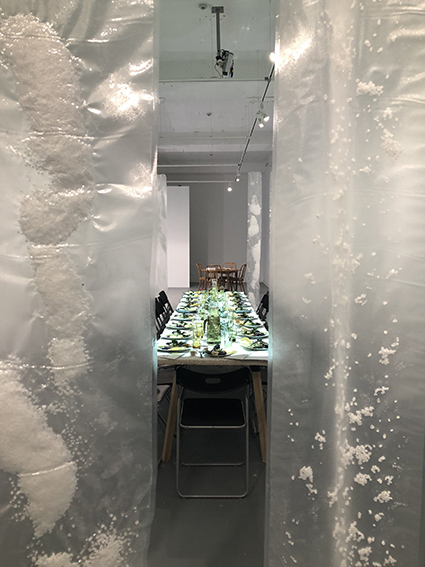Description
The only rock we eat (2018-ongoing)
First commissioned for Plenty exhibition
ACE Open, Adelaide
Also presented as part of Bruised Food: A living laboratory, RMIT Gallery
Materials: rock salt, vacuum bags, salt encrusted tables, performative meal event
Performative meal event: performed and cooked with Lucien Alperstein.
Whilst salt crosses through the diets of every culture, as well as being essential to our survival, we are also struggling to deal with an excess of it.
Our soil is becoming increasingly saturated with salt due to clearing of native perennial vegetation for agriculture and grazing lands. The environmental effect is widespread and includes: loss of fertile soil, erosion and salt seepage into rivers ‐ ultimately changing our entire ecosystem.
Inside a temporary architecture created with vacuum sealed salt and through a performative meal event this work takes us around the world through stories of salt as currency, the cause of wars and revolutions, as part of trade routes and urban development and brings us back to Kaurna/Adelaide Plains where local agriculture is struggling with changing salinity conditions, coupled with a drought prone environment. The Adelaide desalination plant, built in the driest state in the driest inhabited continent on earth, has the capacity to provide only 50% of city’s drinking water.
The meal was comprised of salt tolerant plants, related to each thematic story, for example the story of RESISTANCE was told through Ghandi’s Salt March across India to the coastal village of Dandi to illegally make salt by crushing some between his fingers at the beach as a protest to British salt tax. This story was then followed by the consumption of a native salt tolerant desert lime Indian pickle. ECONOMICS was discussed through the consumption and comparison of Murray River Salt and Himalayan Pink Salt and how it is cheaper to buy pink salt from the other side of the globe, than locally produced pink salt. The meal proposes a way we can think about the future of food production and consumption through salt, by adapting our diets to suit the changing environment around us.

